Feather Imping
By Dr. Guthrum Purdin, Veterinarian
Birds live by their feathers. They need them to keep warm, to stay dry in the rain and most of all, they need them to fly. There’s a rhythm to molts during which old feathers are shed and new ones grow. If a feather breaks or is damaged, the bird is stuck with it until its next molt. When multiple flight feathers are broken, flight may be impossible. For these birds, unable to find food or escape predators in the wild, life is at an end.
When such patients are brought to CWC, there are options available, determined by species and the type of flight feather affected. Some species can have the broken feather stump removed and it will grow back, even when not in molt. For others, like hawks and falcons, removing a broken feather can permanently damage the follicle it grows from. Fortunately, there’s another option. This is an ancient process called “imping” invented by falconers centuries ago.
If there is enough of the original feather shaft present, an undamaged feather from the same location on the same species can be trimmed to replace the broken feather’s missing portion. An “imping needle” is inserted inside the shafts of both the broken feather stump and the donor feather. Hundreds of years ago, these “needles” were made of iron dipped in brine that would rust, firmly attaching the two parts. Today imping needles can be made of bamboo whittled to fit. Other materials include cactus needles, wire, metal skewers, fiberglass, and feather shafts from smaller birds. Rather than rust, fast setting modern epoxies are used, fixing the two parts into a single unit.
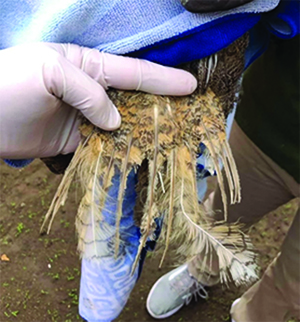
Great Horned Owl tail before
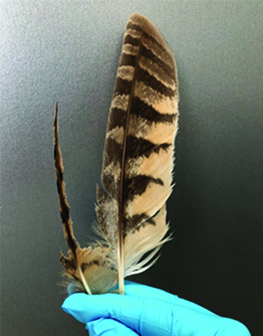
Broken feather and donor feather
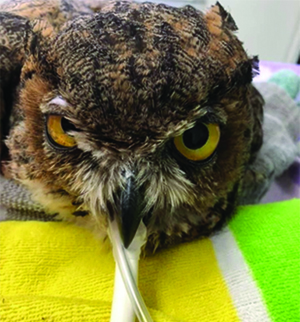
Owl under anesthesia
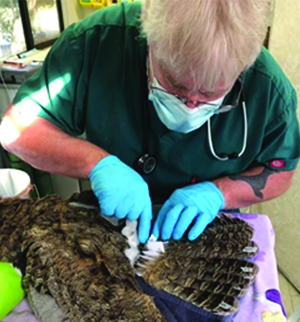
Imping
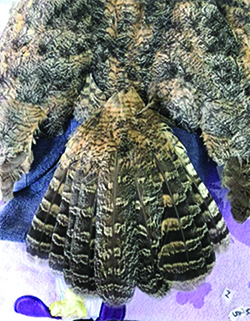
Great Horned Owl tail after imping
The imped feather needs to be as strong and durable as the original, able to take the stresses of wind and aerial acrobatics. The positioning also needs to be exact. Bird feathers in flight form a single unit, scooping the air and lifting the bird up like airplane wings. Poorly positioned imping allows air to leak between the feathers, forcing the bird to work harder to stay aloft.
This is especially true for those that hunt from above. Peregrine Falcons can catch other birds and bats in midair by having perfectly aligned feathers allowing for tremendous speed and maneuverability. Owls rely on stealth; their feathers are aligned to make them silent in the air—an imperfectly imped wing is noisy, alerting their rodent prey to the hunter’s approach. An imper needs to understand avian lifestyles and adaptations.
The number of patients who need to be imped varies each year. Sometimes there are only a few birds who require this procedure, while other years we might receive dozens. One of the greatest moments of working with birds is watching one whose feathers were broken or burned, flying off towards the horizon.
